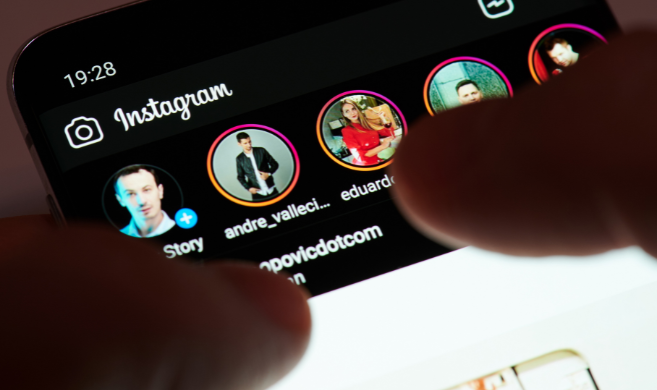Research shows that 98% of Facebook’s total revenue in 2019, amounting to $20 billion USD, was generated by the advertisements hosted on the platform. Yet social media platforms such as Facebook, Instagram and TikTok rely on content creators to attract users, and this is what attracts companies to purchase advertising on these platforms.
Among these content creators, a sizable number are influencers, whose posts lead to increased user engagement with both influencer and platform. In 2019, 39% of all Instagram profile owners who had more than 15,000 followers were influencers. Their posts comprise the main source of platform traffic, increasing the likelihood of higher advertising revenues. More engaged users lead to a higher number of people viewing ads. Influencers are attracted to stay on social media platforms and use them more if the tools available help them increase their follower numbers. Followers equate to currency for influencers. The more followers they have, the more valuable they are.
In 2019, 39% of all Instagram profile owners who had more than 15,000 followers were influencers.
To increase user traffic, social media platforms work to launch innovations to improve services and compete with other entities, such as the launch of “story” concept. Yet, technology does not create value on its own. Those creating value are influencers on social media platforms. Technology introduced needs to be helpful for them in reaching and engaging with their communities. We wanted to investigate whether innovations do always achieve this.
The introduction of the “Story” feature: a step towards “normalizing” influencers
The “traditional” social media post is a piece of content that influencers put time and energy into creating. They are staged items that are dressed up well and designed to stay on the platform forever. They might include a feature of a new fashion item, a performance-inducing sports drink or a clever gadget. In posts, influencers show themselves at their best and are aspirational, attracting followers. To a certain degree, the follower idolizes the influencer. Influencers are not seen as “ordinary persons.” The relationship is one-way, influencer to follower.
In 2016, Instagram introduced the “Story”, aiming to increase engagement between content creators and users. Instagram believed this would in turn make the platform more compelling for advertisers and raise revenues. The Story presents the influencer with the opportunity to post impromptu content that provides a glimpse of their day, for example, “I ate this pizza,” or “I saw this animal.” This type of post would remain on the platform only for 24 hours and then disappear. The underlying idea was to create more possibilities for influencers to engage with their followers. The Story is designed to be a filler between more carefully crafted posts.
Because the influencer is seen as more of a “normal person” through self-disclosure at different level, the relationship with the followers changes.
As a less-curated item, the Story is a tool that allows the content creator to produce an item quickly that gives a deeper insight into them, and which may be more revealing than the typical post. Investigating this, we saw that this leads to self-disclosure at a level that normalizes the influencer. Because the influencer is seen as more of a “normal person” through self-disclosure at different level, the relationship with the followers changes. While prior to the Story, the influencer might have been somewhat revered by followers, the Story may lead to more of a two-way relationship between influencer and follower. So we wanted to understand if culture had any impact on this.
We decided to research what happened as a result of the introduction of the Story feature, and if this change was having the effect that social media platforms expected it to across the board, i.e. higher engagement.
Self-disclosure is not always culturally appropriate
What we discovered was that in some cultures the use of the Story leads to a higher level of user engagement with followers, but in other cultures it has a detrimental impact. This is due to the “Power-Distance” element of culture. Power-Distance is concerned with the relationship between people in authority and those that are subordinate to them. For example, cultures that have a high level of power-distance include China, Japan, India, Malaysia and Russia. Those with low power-distance include Denmark, New Zealand, Austria and Ireland.
In cultures that have a high level of power-distance there is a greater level of respect for hierarchy, and there is an understanding that power is unequally distributed between different elements in society. This is considered legitimate and even desirable in such societies. Evidence from the research suggested that people in such cultures may not appreciate self-disclosure from those in powerful positions, such as influencers, though this was not well researched in the past.
There might be less comments on "Stories" in high power-distance cultures because people want to hold their idols up higher than them.
What we found was that people in low power-distance cultures were more likely to both like and comment on Stories and engage with the influencer. Conversely, in those where there was higher power-distance, while followers did like influencer Stories, they were less likely to comment on them. We believe this is the case because in high power-distance cultures, people want to hold their idols up higher than them and do not want to see them as “normal people” in the same way that other low power-distance cultures will enjoy and accept.
Social media platforms must consider all stakeholders and cultures
From undertaking our research, we highlighted that social media platforms need to carefully consider all stakeholders when rolling out new features. Not all stakeholders in all regions may benefit equally from certain features, due to cultural differences. This could impact adversely on advertising revenues, so is well worth taking into consideration at the outset when devising new strategies.
Critically, the Story is just one novel development from social media platforms. There are now, and there will continue to be, more new features in the future as these platforms evolve. Social media platforms need to take into account cultural differences in different regions when rolling out these features, noting that they may not be of equal value in some areas. They may even be detrimental to the aims of content creators in some regions. This could negatively impact on advertising revenues. Analysis in advance of development and running tests in different regions could identify unforeseen issues.
Social media platforms need to carefully consider all stakeholders as well as cultural differences in different regions when rolling out these features.
Equally, influencers should not adopt technology for the sake of it. They should assess its usefulness for them and the impact on the specific communities they are seeking to engage with. This will help them to determine if the new feature will bring any value to user engagement. Influencers on all social media platforms should also consider the cultural implications of releasing different types of posts. For example, on TikTok, for some regions influencers should think about the content of their videos and the level of self-disclosure within before posting.
Influencers should not adopt technology for the sake of it.










